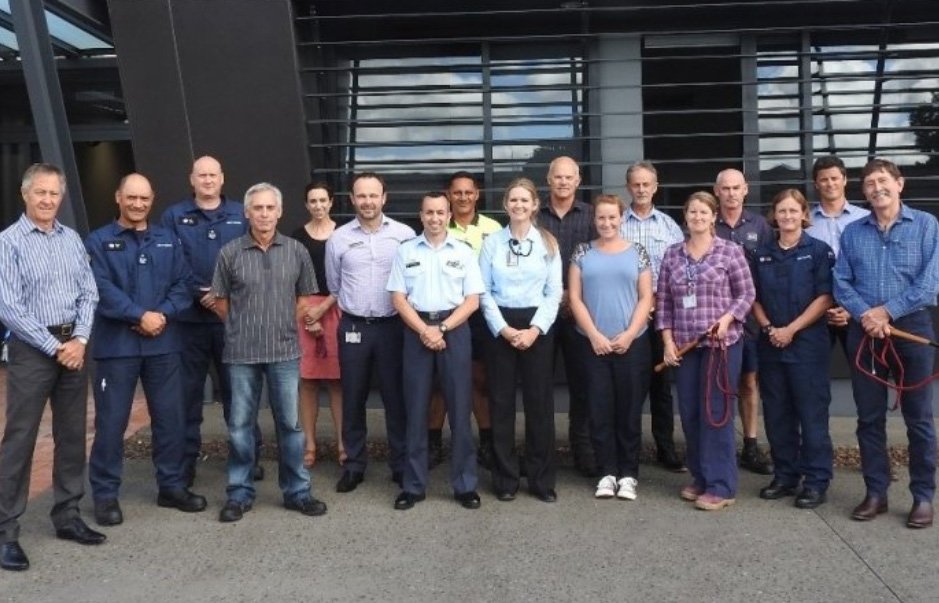By Jill Brix, Principal Aviation Consultant, Avisure
Maintaining operational readiness and airfield capability is critical for the Royal New Zealand Air Force (RNZAF) who operate a small, but heavily committed, aircraft fleet. Wildlife hazards are of particular concern as any conflict between aircraft and wildlife can result in serious damage, injury to aircrew and a range of other operational consequences.
Certain land use activity close to aerodromes can contribute significantly to the wildlife strike risk. RNZAF Base Auckland (AKL) (Whenuapai aerodrome) used to be surrounded by farms and natural areas, but the urban environment is now encroaching, bringing wildlife attractants such as additional water bodies. RNZAF Base Ohakea (Ohakea aerodrome) is surrounded by agriculture including maize, dairy, deer farms and piggeries, as well the Rangitikei River. These land uses can attract a significant number of wildlife, which may fly through aircraft airspace.
The RNZAF has always understood the importance of an integrated approach to reducing wildlife strike risk. Ohakea aerodrome’s first bird management plan, developed by Dr Peter Harper (an ornithological consultant) in 2010, established the culture of looking at wildlife hazard management as a multi-faceted approach, including off-airport management. Then Base Commander, Group Captain D.J. Hunt, and the Commanding Officer Operations Squadron, Squadron Leader Ivan Green, said ‘managing bird strike is a commitment to maintaining the safest operation we can, not only for military personnel, but for the surrounding community, and protecting wildlife. We do this through an integrated wildlife hazard management program. To maintain the capability of our airfield and protect our aircraft using them, we must protect the terminal airspace surrounding them.’
Key to the implementation of integrated wildlife management programs was the creation at both bases, of airfield environmental officer (AEO) positions, in 2014, and airfield managers, in 2016. Their influence has improved drainage, managed grasslands fertility (via soil nutrition, selective herbicide use and mowing), and evaluated building design to identify possible wildlife attractants. So far, this work has helped lower the frequency of wildlife strikes.
The RNZAF are members of the New Zealand Airports Association Wildlife Hazard Group and Australian Aviation Wildlife Hazard Group (AAWHG). It was during one of the 2016 AAWHG forum sessions when Whenuapai AEO, Deborah Gush, connected with Avisure, wildlife hazard management experts, to see how they could take RNZAF to the next level. Since then, Avisure and RNZAF, supported by Defence Estate and Infrastructure (Environmental Services), have worked together to achieve some great things, including:
March 2017
Avisure delivered wildlife hazard management training to airfield management, rescue fire service, PAE staff (who maintain the airfields grasslands and infrastructure) and Defence Estate and Infrastructure.
June 2017
Avisure audited the wildlife management program at RNZAF AKL against relevant rules and regulations. At this time, Avisure also completed wildlife surveys on and off the aerodrome, assessed species strike risks, and evaluated the efficacy of program implementation.
Defence Estate and Infrastructure (Environmental Services) commissioned Avisure to deliver the RNZAF Base Auckland Land Use Planning for Wildlife Hazards Report which assessed and reviewed potential off-Base wildlife hazards in the vicinity of RNZAF AKL.
2017/2018
Avisure, commissioned by Defence Estate and Infrastructure (Environmental Services), worked closely with the Airfield Manager, David Bacon and the AEO, Shelley Jones, to develop the RNZAF Base Auckland Wildlife Hazard Management Plan including procedures and species action plans.
May 2018
Defence Estate and Infrastructure’s Senior Statutory Planner, Rebecca Davies, commissioned Avisure to provide expert evidence as part Auckland Council’s Plan Change 5 (Whenuapai Plan Change), which relates to proposed new development adjacent to RNZAF AKL
2019
Avisure is working closely with the Airfield Manager, Paul Smillie and the AEO, Jim Cook to develop the RNZAF Base Ohakea Wildlife Hazard Management Plan which was commissioned by Defence Estate and Infrastructure (Environmental Services).
2020
Avisure will be delivering refresher and advanced training at RNZAF AKL. Outside of the work with Avisure, RNZAF implements an impressive program that includes:
- Base standing orders on wildlife management
- Awareness campaigns
- Firearm safety templates
- The use of a variety of dispersal tools, including dogs (the only NZ operator to do so)
- Airfield Grass Management Plan
- Flood modelling to understand the ephemeral water bodies that attract wildlife
- Building designs to reduce bird attractiveness
- Upgraded fence lines and drainage
- Developed strong relationships with landowners within a 15km radius of the Ohakea aerodrome to help manage wildlife attractants contributing to the strike risk
- Shared their learning. Rebecca Davies, Defence Estate and Infrastructure’s Senior Statutory Planner, presented at the 2018 AAWHG Forum held in Cairns, Australia on the work done for the Plan Change 5 (Whenuapai Plan Change).
This integrated approach not only highlights RNZAF’s commitment to reduce the wildlife strike risk, but also shows them as one of the leaders in this field.

